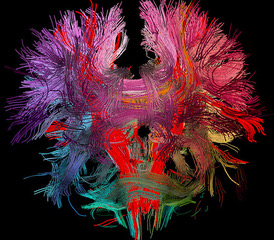- How Trauma Derails the Time-Keeping Part of the Brain (and One Way to Bring It Back)
- When a client’s “thinking brain” goes offline
- Why can trauma be so devastating for our clients’ relationships? The answer could lie in the brain
- Why Connecting with the Right Brain is Key to Regulation
(The National Institute for the Clinical Application of Behavioral Medicine emails, 2020-21)
I’ve signed up to one of those email alerts. It’s for psychotherapists, not parents. It’s for professionals working with early life trauma survivors: clients with huge difficulties in relationships, who struggle to contain their feelings, to be in and on time, to connect, even to think.
What is offered here is a set of discourses – concepts and practices – to (re)make the brain-body. These courses introduce us to the latest in the ‘neurobiology of attachment’ or ‘developmental neurobiology’, that is, to scientific understandings of how our brain-bodies do relationships with humans, animals and the world. What are the neurobiological processes of fear and safety, of love and care, of anger and hurt? Sessions talk about clients’ brain chemistry, evoking neurochemicals and brain structures as significant actors in therapeutic interactions. Body-focussed therapeutic practices are taught – a client experiencing ‘collapse’ needs to increase their sympathetic nervous system, to raise their noradrenalin levels, to move back into a realm of psychological safety. The teaching psychiatrist advises that a therapist faced with this situation might suggest the client stand and literally push a wall or door, or jog on the spot, to ‘activate’ their ‘fight or flight’ defensive responses (rather than the passive strategies of shutdown and submit).
To the critical eye, this might look like rampant biological essentialism, reducing the social complexity of mental life and relationships to neurochemicals and bodily movements. Surely social scientists would be ‘against’ this?
Looking more carefully at what’s happening here, we might instead see an attempt to bridge the historical gap (which developed across the 19th and 20th centuries) between scientific/psychiatric knowledge of ‘the brain’ and its activities, on the one hand and psychotherapeutic understandings of psychosocial life challenges and the relationships that might ameliorate them, on the other. What these courses do is to try to elaborate or enliven the hyphen in ‘brain-body,’ to come to know what that connection might be and thus to understand better what might help trauma survivors to live with less suffering. Stitching across such vast, defended gaps is not easy. It involves the development of a new field blending technoscience, biomedicine and psychotherapeutic care. And money. This new field is occurring within universities and outside them – in psychotherapists’ offices, in social work encounters and in homes. As adopters, my partner and I were trained by social services and charities to ‘therapeutically parent’ along these lines (Mackenzie and Roberts, 2017). Here, in its North American form, such learning involves a website, frequent emails offering ‘special prices’ and intriguing ‘tasters’. If I want to know more – and I do – I have to buy.
These emails have a troubling aura of salespersonship. But each one, and indeed their regularity, gives me hope. Out there, intelligent and committed people are thinking about suffering, and doing things to try to help. Remaking our brain-bodies one email at a time.
Author: Celia Roberts
Further reading:
Mackenzie, Adrian and Roberts, Celia. 2017 Adopting Neuroscience: Parenting and affective indeterminacy. Body & Society 23(3): 130-155
Rose, Nikolas. 2019. Our Psychiatric Future: The politics of mental health. Cambridge, UK: Polity Press
Wilson, Elizabeth. 2004 Psychosomatic: Feminism and the Neurological Body. Durham: Duke University Press
